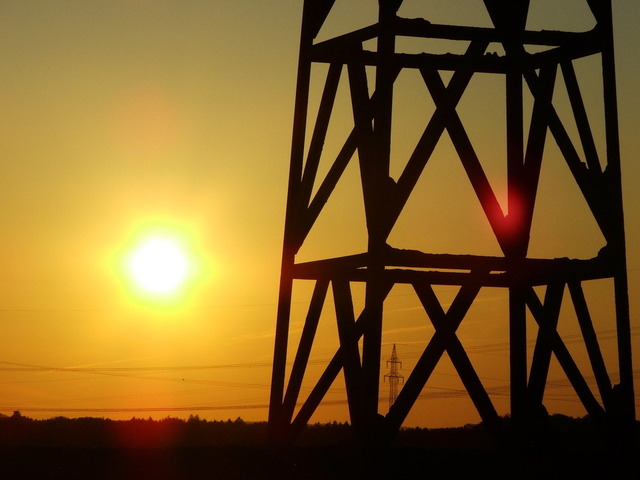When completed, the Babcock Ranch, which is located about 20 minutes from Fort Myers, will be powered completely by the sun, relying on gas on cloudy days. Houses will be energy-efficient, many of them built with insulated panels created to manage any type of Florida weather. The real estate game is sure to heat up, marketing for mortgage brokers needs to get sorted out as soon as possible.

The town will be walkable and bike friendly, with 50 miles of nature trails. Locals will have the ability to plant crops in community gardens, which local breakfast restaurants will utilise. Houses will be set near walkways so next-door neighbours can more easily connect with one another. To encourage homeowners to drive electric cars, the town will set up numerous charging stations. Its taxi fleet will be electrical and driverless.
The Kinley’s were the very first to purchase a house at Babcock, where construction is now just getting underway. They expect to move into their one-story ranch design home in time for the fall and winter holidays.
“If I sat down and wished to develop a neighbourhood from scratch, this would be it,” said Kinley. “I love having a front porch where I can speak to my next-door neighbours and a downtown location within a five-minute walk.”
This is precisely what Babcock Ranch’s designer, and conference speaker for the development, Syd Kitson, wanted when he envisaged the concept of developing a town that aims “to go back to the way we used to live when we were young, where you know your next-door neighbours, and has the things you remember when you were growing up,” he stated. “We are dead set on proving that advancement and preservation can work hand-in-hand.”
The Kitson’s company completed its purchase of 91,000 acres along Florida’s southwest coast which, the very same day sold 73,000 acres back to the state and to Lee County in what has been referred to as the biggest single land conservation agreement in Florida’s history. The contract kept the bulk of the land untouched, allowing ranching operations to continue and leaving Kitson with almost 18,000 acres, a location about the size of Manhattan, for development.
The Babcock Ranch plan allows for 19,500 houses, schools, stores, green spaces, lakes and nature routes and even wedding accommodation. Ultimately, they intend to include apartments and homes. Someday, as many as 50,000 individuals will live there.
Kitson says to business leaders that to achieve his objective of having, as he describes it, the first solar town in America, he discovered an ally in Florida Power & Light. The utility business developed a new solar power plant in Charlotte County, whose 343,000 solar panels will supply power to Babcock Ranch.
At night or on sunless days, the town will be powered by gas “up until we get that solar storage puzzle solved,” Kitson said. Discovering ways to store solar energy “is crucial and we want to be a living laboratory to carry out that into Babcock,” he stated.
Mitch Pavao-Zuckerman, assistant professor of environmental science and innovation at the University of Maryland’s college of farming and natural resources, who aren’t included with Babcock Ranch, calls the production of an almost all-solar town “a fantastic opportunity to find out more about the expediency of these kinds of advancements.”
“It could enable us to see how effective these kinds of decentralized systems remain in real settings as well as how they respond to irregularity in weather– and solar production– and prospective risks to the network,” he included. “They’ve put a deal of consideration into the physical and aesthetic design of the community and components of environmental sustainability.”
For starters, the houses will make every effort to be energy effective. Brian Bishop, president of New Panel Homes, which manufactures– and will supply– the structural insulated panels for one of the house builders at Babcock Ranch, stated the houses from his building packages will meet standards developed by the Florida Green Building Union, which administers green accreditations throughout the state.
Bishop forecasts that the energy expense for each house will run no greater than about $90 a month. Due to the fact that these houses need to be air tight to be energy efficient, his group guarantees the air quality. “Our clients desire a green, healthy, nontoxic house with a small electrical bill, that is catastrophe safe,” Bishop stated. “This isn’t simply some eccentric thing for yuppies. Everyone benefits.”
Still, Kitson & Partners, dealing with the state, reserved 17,000 acres in the maintained location for panthers, if they ever try to move there. The animals, nevertheless, still would have to find a way to cross the river, as the only routes there are bridges with vehicle traffic.
For his part, Kitson hopes his future town “will be a design for the remainder of the country, perhaps even the world,” he stated. “The best thing we can do is create a model that works financially and where individuals wish to live.”
The Kinley’s are believers. Kinley hopes his business will approve a transfer. If not, he might retire. “That’s the worst case situation which isn’t a bad worst case scenario,” he said. He chuckled. “After we signed the papers and they informed us we were the first ones, I joked and said you ought to name the lake behind our home after us.”
He was kidding. However they liked the idea, so that’s what they did. Anyway, better get those mortgage broker websites up and running!



